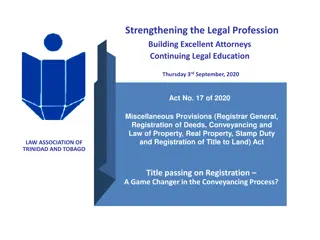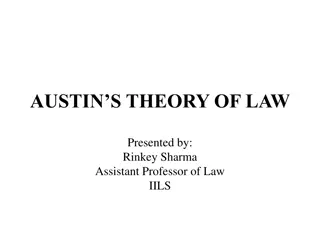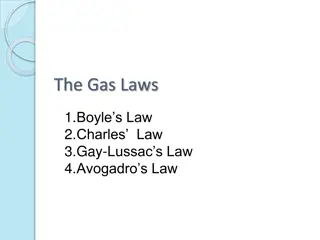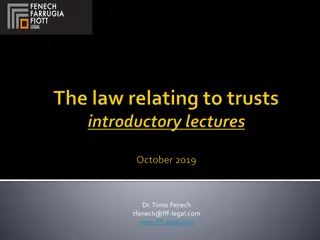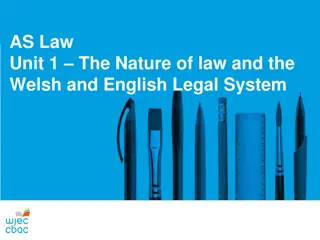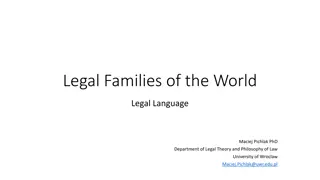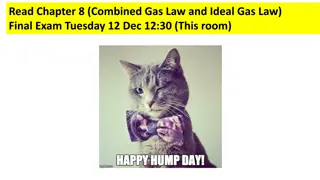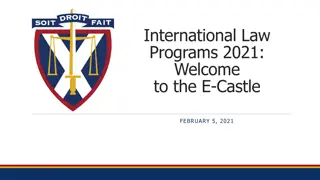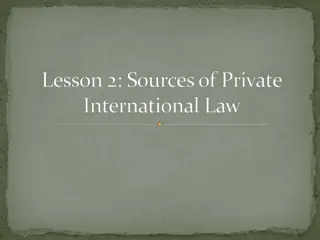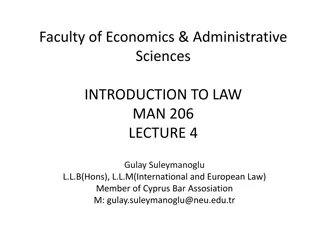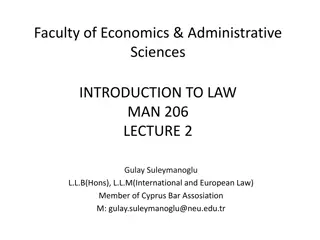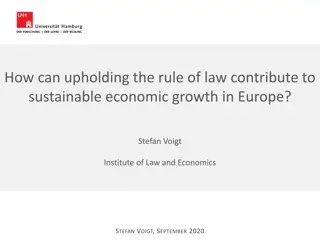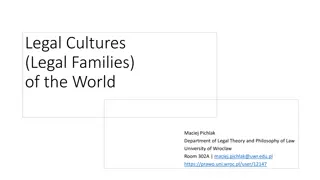
Understanding Coulomb's Law in Physics
Learn about Coulomb's Law, a fundamental principle in physics describing the electrostatic interaction between charged particles. Discover the law's definition, importance, mathematical formula, and explanation with examples and illustrations. Explore the significance of the constant of proportionality and the physical interpretation of permittivity.
Download Presentation

Please find below an Image/Link to download the presentation.
The content on the website is provided AS IS for your information and personal use only. It may not be sold, licensed, or shared on other websites without obtaining consent from the author. If you encounter any issues during the download, it is possible that the publisher has removed the file from their server.
You are allowed to download the files provided on this website for personal or commercial use, subject to the condition that they are used lawfully. All files are the property of their respective owners.
The content on the website is provided AS IS for your information and personal use only. It may not be sold, licensed, or shared on other websites without obtaining consent from the author.
E N D
Presentation Transcript
HINDU COLLEGE GUNTUR
INTRODUCTION COLUMB SLAW DEFINITION IMPORTANCE INTRODUCTION DEFINITION STATEMENT IMPORTANCE FORMULA EXPLANATION
INTRODUCTION Coulomb's law is a law of physics describing the electrostatic interaction between electrically chargedparticles. It was studied and first published in 1783 by French physicist Charles Augustin de Coulomb and was essential for the development of the theory of electromagnetism
DEFINITION Coulomb's law states that: The magnitude of the electrostatic force of attraction or repulsion between two point charges is directly proportional to the product of the magnitudes of charges and inversely proportional to the square of the distance between them. The force is along the straight line joining them.
EXPLANATION If Q1and Q2are two charges separated by distance d in vacuum then according to coulomb's law the force between the charges F F Q1 Q2 F 1/d2 F Q1 Q2/d2 F=k 0Q1Q2/d2
Where k0is constant of proportionality constant. Its depends the medium between the charges and also on the system of units the are expressed and it is known as coulomb s constant In SIsystem forfree space i.e. air or vacuum K0=1/4 0 where 0is called permittivity of free space 0=8.8542 10-12c2/N m2.In free space we can write F= 0(Q1Q2/d2) F= 0Q1Q2/d2SSS 0= 9 109N m2 /c2 F= 9 109Q1 Q2/d2N
Where k is called permittivity of the medium and r is the distancebetween the charges Physical significance of k is it is the ability of the medium to allow electric lines of force
DEFINITION OF COLUMB F= 9 10-9Q1 Q2/d2N If Q1=Q2= 1C and d=1m then F= 9 10-9N COLUMB It is the charge when placed at distance of 1m from an identical charge in vaccum experiencesa forceof 9 10-9N ONE c0lumb of charge is equal to 6.25 1018electrons
IMPORTANCEOF COLUMBS LAW The Coulomb's law is applicable only for static charges. For moving charges, only the Gauss law holdstrue. ... Coulomb's law is only applicable to static point charges, that is charges with dimensions much less than the separation between them The force between the chargesalways acts along the line Joining ofcharge This force forms action reaction pair
THANK YOU P.M.PRASAD HOD PHYSICS HINDUCOLLEGE ANY QUERIESPLEASE





